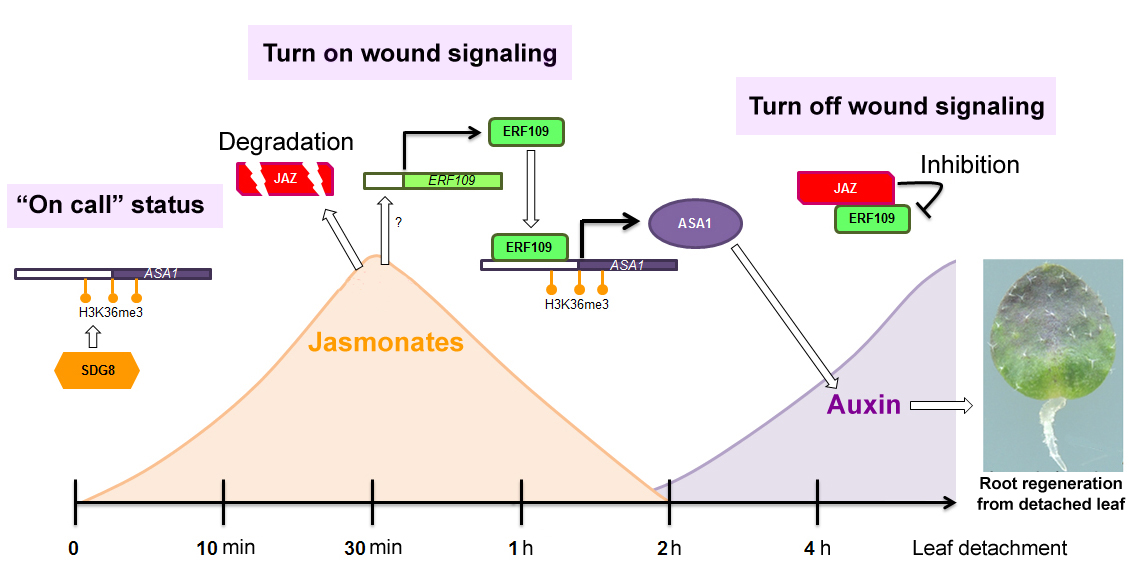Scientists Reveal Wound Signaling Pathway in Plant Regeneration
Scientists Reveal Wound Signaling Pathway in Plant Regeneration
Powerful regenerative ability is one of the survival skills of plants adapting to environment. When detached branches or leaves fall on the wet soil surface, they can regenerate adventitious roots quickly for survival. Wounding is the first event to trigger regeneration, but little is known about how wound signals control regeneration.
In a new study published in Nature Plants, a team of scientists led by Prof. XU Lin from CAS Center for Excellence in Molecular Plant Sciences, Shanghai Institute of Plant Physiology and Ecology, Chinese Academy of Sciences, revealed the molecular mechanism of the wound signaling pathway in plant regeneration.
Detached leaves of Arabidopsis thaliana can spontaneously regenerate adventitious roots from the wounded site, which is an effective regeneration system for studying wound signal transduction. Using this system, the study revealed that the "jasmonate-ERF109-ASA1" wound signaling pathway, together with theSDG8-mediated histone modification, promote auxin biosynthesis within 2 hours after leaf detachment. Auxin accumulation triggers stem cell fate transition to regenerate roots. After 2 hours, downregulation of jasmonates results in the interaction of JAZ and ERF109, thus shutting down wound signaling.
Although woundingmay beharmfulto plants, it is also the signal that activates regeneration. Understanding of the molecular nature of wound signaling will provide clues for the improvement of plant regeneration techniques, such as cutting and grafting.
The research was supported by grants from the National Natural Science Foundation of China, the Chinese Academy of Sciences, and the National Key Laboratory of Plant Molecular Genetics.
